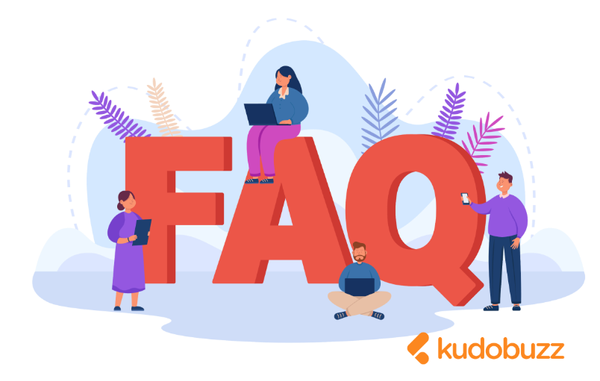“Online Shopping” as it’s popularly referred to, is another term for electronic commerce (E-commerce); and can gain popularity by adopting SEO techniques. The process of e-commerce is basically buying and selling of goods and services over the internet. This mode of trade has been in existence for sometime now and its rapid growth has become a prompt for many to venture into online trade. With its pros and cons, the former certainly overrides the latter. It’s of no surprise that lots of people are heading in this direction of business. Of late, life’s busy schedules have made the convenience of online stores preferable to the traditional brick-and-mortar. The best part, items are delivered at one’s doorstep. Imagine forgetting to get some groceries amidst a marathon of Saturday chores. At 7pm on a Saturday night, you can have groceries delivered at your home! How convenient that it!
When starting an e-commerce website, there are quite a number of things to be mindful of; considering that there are a great deal of competitors out there.
First and foremost, your website should look neat, easy to navigate and very responsive. Hubspot says, “39% of people will stop engaging with a website if images won’t load or take too long to load” (Source). Page speed and other factors also contribute to having a great website.
Correspondingly, finding a niche not only helps in deciding what products to sell, it is vital in the overall success of your online store. Your target market plays a role here, once you know who they are, deciding what to sell becomes easy.
In like manner, metrics are a good way to track site performance. There are some key business metrics that most businesses normally use. These include number of visitors, bounce rate, sales revenue, average time on page, etc. Though all these are equally important, you can agree that one of them matters most to merchants – Sales revenue.
Running an e-commerce site can be overwhelming; especially when you’re not turning a profit; the aim of every e-commerce merchant is to drive major traffic and boost sales in the long haul. In most cases, the wish usually ends at the former. However, with the right strategies, it is possible for e-commerce merchants to drive the right traffic to their sites and achieve increase sales. One would ask: “How do I go about this?”
For the purpose of this write-up, the concentration will be on SEO and related techniques that will be helpful to e-commerce merchants. Ever heard how online store owners use this strategy to make millions of revenue?
What is SEO?
Search Engine Optimization (SEO) is the basic practice of driving organic traffic to your site through search results. The kind of traffic you want to drive should be quality over quantity. Picture a scenario where a merchant has multitudes visiting his website because Google tells them he’s into products made from orange when in actual fact he sells products from Orange Products Inc. He has quantity, not quality. When you set up SEO and Search Engines direct interested buyers to your site, you earn quality traffic.
Also, with SEO, everything is purely organic; you don’t have to pay for Ads to appear at the top.
How SEO Works.
Have you ever paused for a minute to wonder how Google, Bing or Yahoo is able to deliver results to your searches? Think of the SE (Search Engines) in SEO as robots that go through the World Wide Web gathering information from billions of individual websites to create what is called an index. Search Engines, also known as spiders or crawlers then serve this index via an algorithm which tries to match all that data with your query. When you make an online search, the Search Engines provide an answer to the search within a matter of seconds. What happens behind the scenes is a fast scan through billions of documents while executing two functions:
- Providing relevant results useful to the searcher.
- Ranking these results according to the reputation of the websites the information comes from.
That is to say, the process of SEO is influenced by relevance and recognition. Meaning, for a website to rank high on a particular Search Engine, it needs to stand out to be distinguished from the chaff. To do this, there are certain SEO techniques to follow.
SEO Techniques That Every E-commerce Merchant Should Adopt
SEO may seem easy on the surface, but it is essential to know that there are several dovetailing elements that must be worked on to see positive results. Positive results mean organic traffic and which will positively impact your sales.
For every e-commerce merchant, it is critical to take note and implement the following:
Content Creation
Content is an integral part of SEO. Be mindful of the content on your About Us, Product, Collection, and Blog pages. Product pages for instance, should have exceptional content including keywords. Identify best-selling products and provide thorough, rich descriptions. Product page content should not be less than 1,000 words. When a product appear on Search Engine results page, it’s the product’s meta title and description show up. With this in mind, take full advantage and make them as catchy as possible. The aim is to draw your visitors’ attention to your site. One important thing to note: it is almost impossible to have content for all of your over 50,000 products. Hence, you want to concentrate on your products’ parent category and strengthen them. Also, adding words like “Discounted” and “Free shipping” help with the increase of a pages’ click-through rate.
Site structure/navigation
Not only does this help with your SEO, it also vital for your user experience. It is advisable to categorize related products as such; this makes product search easy and the categories very straight forward. Equally important, all your images should have alt texts. There are several reasons for this rule: It helps the visually-impaired understand what the image is about. Also, in cases of image failure, the alt text will be displayed in the image’s place to communicate the essence of the image to the viewer. Since Search Engines are unable to read images, bots scan alt texts to understand and properly index an image. By the same token, your site speed should be encouraging in order to avoid a high bounce rate. Site speed also helps with your SEO campaign.
Optimize your site for mobile.
Your website should not abandon good user experience for mobile devices. Mobile optimization ensures that users who browse your site with mobile devices have a specific optimized experience. The fast growing use of mobile devices makes it imperative that your website is optimized to suit mobile users. Delaying mobile optimization hinders your online business from improving.
Brand Promotion and Awareness
Most e-commerce shoppers trust social proof as much as personal endorsements; this is a good commercial implementation that merchants usually capitalize on. Aside the regular social sign ups, product pages with social-share buttons enable consumers to share products with their network. It is predominantly good practice for SEO as Google may use social signals to evaluate authority. This is an influential way to increase your conversion rate; ignoring this strategy means depriving your site of some SEO benefits and possibly sales.
Why Do Websites Need SEO?
If your site’s SEO is done right, you will not only rank high, but also drive the right traffic to your site.
A must-know is, SEO comes in two folds: On-page and Off Page Optimization. On-page deals with SEO’s practical aspect; these are simple strategies that, when followed, brings in a decent amount of site traffic. The very first step to every successful SEO is On-page Optimization; it deals with aspects on your website that can be optimized for Search Engines.
Image Optimization, Internal Links Usage, Boosting site speed, Responsive Design, Social Sharing Buttons Usage, amidst others are all factors of on-page optimization.
Whereas the above has been said of on-page, off page optimization has to do with facets of other websites which can be optimized to help rank your website. This aspect of SEO goes beyond link building and includes other tactics like: posting in forums, guest posting, building trust, blog commenting, etc.
The question now is: Why do websites need SEO? From the above, we can testify that it’s a brilliant idea that site owners look into SEO for the good of their sites. Let’s find out what exactly this “good” entails:
- There are people searching for your products or services on Search Engines.
Mostly, before users randomly land on your website, they have already done prior search and comparisons of what they’re looking for. There are billions of users online and a large percentage of this group start their search activity on a Search Engine. Having a solid optimized website means you’re likely to come up when someone searches for anything related to your website or products you sell. Especially with local businesses, it is key to optimize your site for local searches. That way, anytime consumers use local search queries to discover location, time, and other details related to your business, you increase your chance of being found.
- SEO builds trust and credibility for your brand.
Google is known to be the largest Search Engine in the world. Should your website ranks high on Google, your brand naturally builds trust and credibility; this in turn builds reputation. Buyers prefer reputable sources; thus, SEO gets you more leads. A large crowd landing on your site is a positive way to improve sales. Also, if your website ranks high on Google, it’s an indication that it’s a significant player in its industry.
- Leads from SEO are likely to have higher close rates than outbound leads.
Do your cold emails get the results you aim to get? Have you tried working on your site SEO? It makes sense that SEO leads will have high close rates than outbound leads. The probability that online buyers will purchase from sources they found through Search Engines are higher than from businesses that use outbound marketing tactics. Comparatively, SEO is a less hands-on approach than other inbound marketing strategies. The reason being, when your target keyword is of moderate competition and your on-page optimization is done well, it won’t require much for your website to climb the ranking ladder on its own worth; as opposed to other inbound strategies that involve some level of repetitive work like email marketing and social media.
- SEO will improve the user experience of your website.
Ranking high on Google means Google’s Search Engines find your site relevant; and your site won’t have much relevance without SEO. Low bounce rates, responsive sites, decent incorporation of images and videos, mobile-friendly designs are some elements Search Engines note as good user experience. These actions are good to consider when optimizing your site for SEO. Proper optimization not only means better rankings, it also means a better user experience.
- SEO assists you to attain market share.
Imagine a scenario where a first time user searches for an item related to your industry and discovers you on Google’s 1st page. What are the possibilities that this individual will scroll through about – say, 10 pages looking for other sellers? As part of the first set of options, you automatically gain a market share in your industry and searchers will not bother finding out about the thousands of other options out there.
Besides, SEO is no respecter of the size of a business. Be it small or large, an effective SEO gives your site the chance to rank over other online businesses. Small businesses are able to outrank larger ones and attract customers when they use effective SEO techniques.
Conclusion
SEO as an aspect of marketing should not be overlooked. Practise these recommended SEO techniques and watch your site gradually climb high on Google’s ranking ladder.









